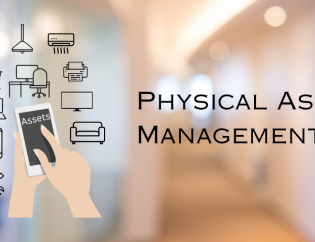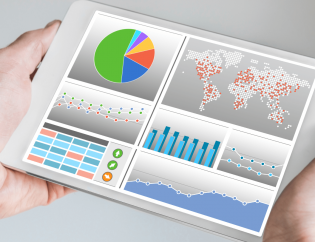
Despite the rapid advancement of digital solutions, many administrative and security processes across organizations—whether small, medium, or large—are still handled manually. While core business functions like finance, accounting, sales, and marketing have embraced digitization and automation, administrative and security tasks often remain untouched.
This is primarily because these processes vary from company to company and are not easily standardized. However, manual workflows in these areas lead to inefficiencies, errors, and wasted time.
In this blog, we explore 10 ways admin and security teams can save valuable time by digitizing and automating their daily operations, benefiting organizations of all sizes.
Admin & Security: Are These Outdated Practices Slowing Your Team Down?
Is your admin and security team still relying on outdated, time-consuming processes? If so, they might be wasting valuable hours on tasks that could easily be automated.
Common inefficiencies include:
- Using pen and paper for record-keeping
- Manually entering data and making repeated calls
- Micro-managing manpower and struggling with coordination
- Searching for lost or outdated information
- Manually creating reports and ensuring compliance
- Verifying people and materials without digital tools
- Dealing with frequent errors in entries and updates
In a fully digitized organization, these inefficiencies are eliminated, allowing teams to work smarter, faster, and more accurately.
Manual Processes: Silently Wasting Your Company's Time
1
Paperwork: The Hidden Time Killer
Paperwork is one of the biggest productivity drains in any workplace. It consumes time, adds unnecessary complexity, and often serves as nothing more than a bureaucratic formality.
Despite the rise of digitization, many organizations—both small and large—still rely on paper registers for tracking visitors, vehicles, materials, and laborers. Gate passes, tickets, and logbooks remain widely used, even when digital alternatives are readily available.
In reality, paper-based processes are no longer necessary. Digital solutions now exist for every workflow, offering greater efficiency, accuracy, and scalability. More importantly, these solutions cater to businesses of all sizes and budgets.
With VersionX products, companies can seamlessly automate their processes, eliminating paperwork and embracing a smarter, faster, and more efficient way of working. The time to digitize is now.
VersionX Products: Solutions that automate processes for small to large companies.
2
Stop Micro-Managing: Digitize Manpower Oversight
Managing manpower across teams is a time-intensive task, especially when ensuring accountability. Overseeing workers like housekeeping staff, security guards, and other administrative teams requires constant monitoring, making it challenging to balance efficiency with supervision.
However, digitization has transformed this process, drastically reducing the time and effort needed—sometimes to zero. With automated tracking and real-time dashboards, organizations can monitor workforce activities without the need for manual oversight.
Beyond efficiency, digital systems enhance accountability. Every task, check-in, and responsibility is recorded, leaving no room for miscommunication, negligence, or blame-shifting. When everything is tracked and transparent, productivity improves, and management becomes seamless.
3
Visitor & Vehicle Management: Inefficient Processes = Waste of Time
While many organizations have biometric systems and digital tools for managing staff, visitor and vehicle management often remain outdated. Most companies still rely on paper registers to log guests, visitors, and vehicles—an inefficient process that wastes time and serves little practical purpose.
Traditional paper-based systems also fail to differentiate between various visitor categories, such as short-term guests, day laborers, frequent visitors, or groups. Treating all visitors the same leads to unnecessary delays and inefficiencies. Additionally, manual visitor verification is time-consuming and prone to security loopholes, putting premises safety at risk.
A digital visitor and parking management system streamlines the entire process, eliminating the need for paper registers, manual verification, or call-based approvals. With automated data capture and real-time tracking, security and admin teams can efficiently manage visitors and vehicles while enhancing security and operational efficiency.
4
Verifying People & Materials: Manual Processes Slowing Your Teams Down
Every day, assets, materials, and people move in and out of business premises. Yet, relying on manual verification makes this process slow, inefficient, and prone to errors. Security guards or admin staff often struggle to confirm whether a paper-based approval is authentic, leading to wasted time and potential security risks.
Traditional verification methods raise several challenges:
- How can you quickly confirm a visitor’s phone number?
- How do you differentiate between material categories or identify a regular visitor from a first-time guest?
- Is there a way to fast-track entry for pre-approved visitors or materials?
With a digital system, these inefficiencies disappear. Automated verification eliminates the need for phone calls, paper-based approvals, and manual cross-checking. Visitors, materials, and approvals can be verified instantly, ensuring a seamless, secure, and time-saving process.
5
Eliminate Manual Calls & Checks: Automate for Efficiency
Relying on manual calls and checks for administrative and security processes is both tedious and time-consuming. In traditional systems, calls are unavoidable—security guards or receptionists often need to verify visitor appointments, confirm material approvals, or check staff availability. This outdated approach slows down operations and creates unnecessary bottlenecks.
With digital solutions, manual calls become obsolete. Automated alerts, notifications, and reminders streamline approvals and verifications, eliminating the need for constant back-and-forth communication. Instead of making repeated calls, staff can rely on real-time updates, instant approvals, and automated warnings to manage operations seamlessly.
By digitizing admin and security workflows, organizations can save time, reduce errors, and ensure smoother, more efficient processes.
6
Retrieving Critical Information: Manual Records Are Useless
In times of urgency, admin and security teams rely on quick access to critical information. However, in many organizations, key data is scattered across paper registers, folders, or spreadsheets, making retrieval slow and inefficient. Hours are wasted searching for small yet essential details that should be available at the touch of a button.
Consider these common scenarios:
- How many visitors did a staff member host in the past month?
- Which visitors stayed longer than permitted?
- How many vehicles were parked overnight?
Despite maintaining stacks of paper logs, manually extracting accurate insights is nearly impossible. Similarly, when critical assets require servicing multiple times a year, missed schedules are inevitable due to a lack of timely reminders. Without automated alerts, maintenance deadlines are easily overlooked, leading to disruptions and increased costs.
A digitized system changes this. Automated visitor logs, real-time tracking, and preventive maintenance alerts ensure that essential data is instantly accessible, improving efficiency, security, and compliance.
7
Reports: Relying on Incomplete, Inaccurate Data?
Reports and analytics are essential for informed decision-making and compliance, whether in security, administration, or overall operations. However, in many organizations, teams spend excessive time compiling reports manually—often working with scattered, incomplete, or inaccurate data due to human errors in data entry.
Without a centralized, automated system, retrieving and verifying data becomes a tedious process. Manual reporting is not only time-consuming but also unreliable, leading to flawed insights and poor decision-making.
A digitized system eliminates these inefficiencies. With real-time data collection and built-in analytics, teams can generate accurate, insightful reports instantly. Instead of wasting time on manual data entry and verification, organizations can focus on optimizing processes and making data-driven decisions.
8
Team Coordination: Haphazard or Streamlined?
Admin and security processes demand seamless coordination among multiple stakeholders. When managed manually, these processes become time-consuming, inefficient, and prone to failures. Many security lapses occur simply due to a lack of timely communication and coordination.
This issue is especially critical in security operations, where delays can lead to severe consequences. Take emergency situations like fires or external threats—swift coordination between admin, security, and facilities teams is essential to ensure safety. However, manual systems often result in delayed responses, increasing risks for residents and employees.
Transitioning from manual to digital processes eliminates these coordination challenges. Automated systems send instant alerts to the right teams, ensuring immediate action.
Whether it’s fire, unauthorized access, or another emergency, digital workflows ensure that all stakeholders are promptly notified and guided toward the best course of action—saving time, effort, and, in some cases, even lives.
9
Compliance: A Necessity, Not Just a Formality
Compliance is a critical responsibility for every organization, helping to mitigate risks and ensure operational safety in buildings. However, managing compliance manually is time-consuming, paperwork-heavy, and often treated as just another box to check.
Take fire safety compliance, for example. Simply installing fire extinguishers is not enough—regular maintenance and functionality checks are essential. Yet, in many cases, compliance remains a formality, and faulty or unserviced fire extinguishers go unnoticed until an emergency occurs.
A digitized compliance process eliminates these risks. Automated systems schedule maintenance, track inspections, and send real-time alerts if equipment is malfunctioning.
With proactive monitoring, organizations can ensure that compliance is more than just paperwork—it’s an active safeguard against potential hazards.
10
Human Errors: The Hidden Cost of Manual Processes
Mistakes are inevitable in manual data entry and record-keeping. Whether it’s a missed entry, a wrong number, or misplaced paperwork, errors can create inefficiencies, waste valuable time, and lead to flawed decision-making. Teams often spend hours fixing inaccuracies or compiling reports based on incorrect data—causing delays and potential security risks.
Digitization eliminates these errors. When visitor check-ins, staff attendance, or material movements are recorded via QR codes, face scan, or automated approvals, data accuracy is ensured. Entries are updated in real time, reducing human intervention and minimizing discrepancies.
With a digital system, data is captured seamlessly, and organizations have full control over what information is recorded, stored, and accessed—ensuring efficiency, reliability, and error-free operations.
The Future of Workplace Efficiency & Security
Despite advancements in technology, many organizations still rely on manual processes that are slow, inefficient, and prone to errors. Even large enterprises with extensive resources often struggle to fully digitize their security and administrative workflows, as effective solutions require seamless integration between hardware and software—something not readily available in the market.
At VersionX Innovations, we are bridging this gap. With our expertise in both software and hardware, we develop intelligent, end-to-end solutions that automate complex processes, enhance security, and drive operational efficiency. The future of digitization is here, and we are leading the way.










